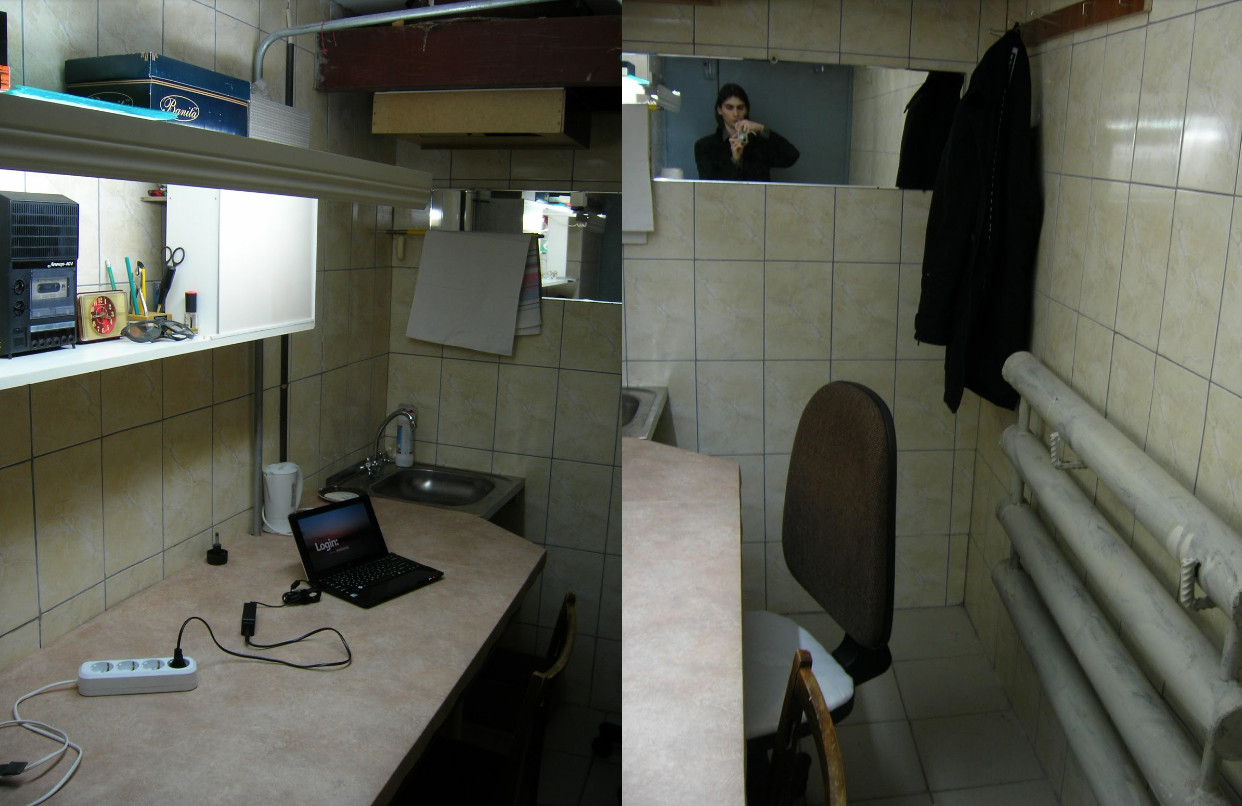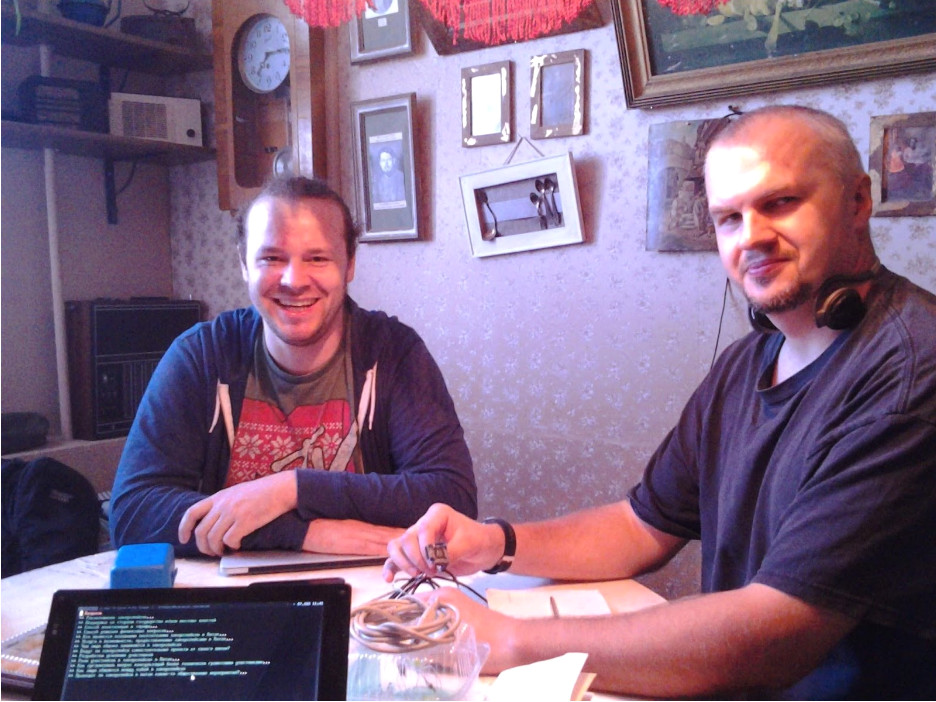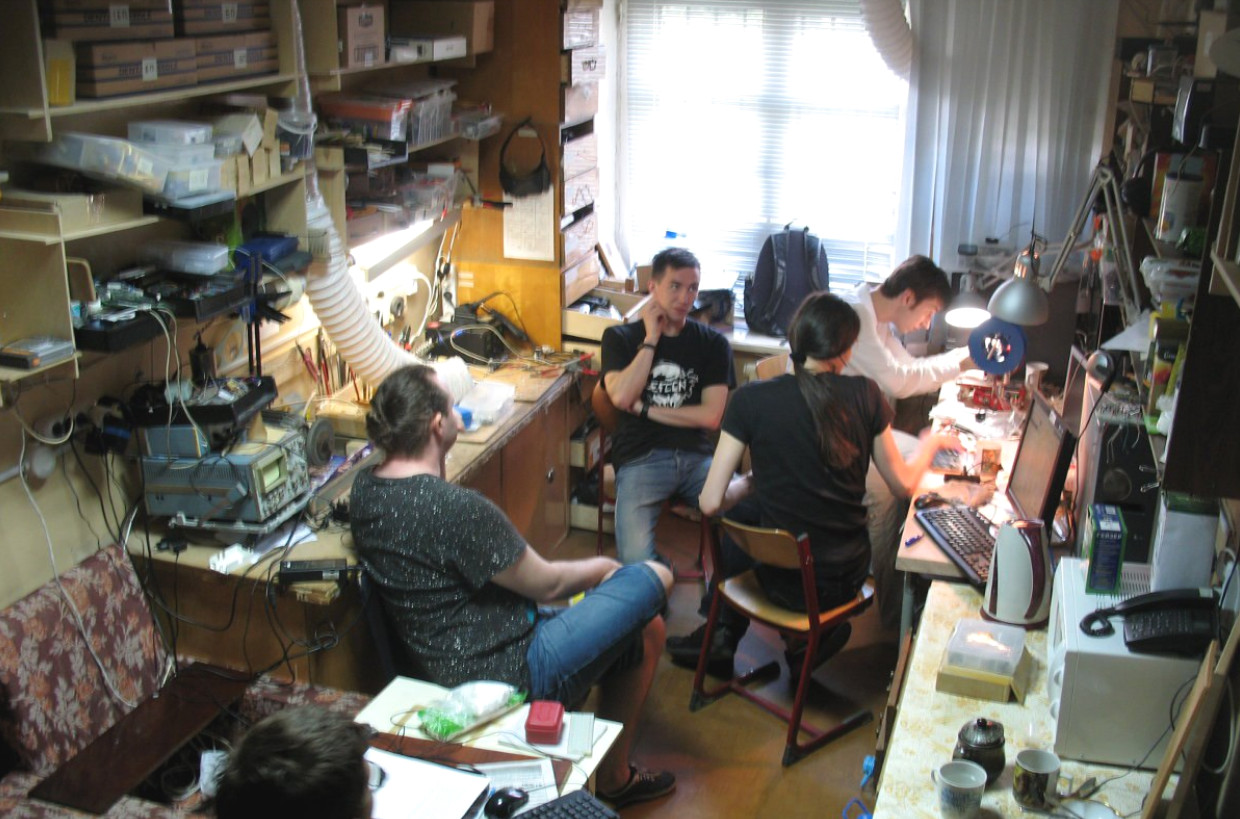
It is always interesting to find out how people come up with the idea to create something new, and creating clubs for free robotic creativity is hackspace (hackerspace) is no exception. As a rule, such clubs are created by simple geeks for themselves, and therefore each is unique in its own way. And I want to support such useful initiatives, a story about such clubs. Maybe such stories will be the initial idea for the consolidation of talented people and the emergence of such clubs in your cities.
The
hackerspace of CADR lives in Nizhny Novgorod, and the founder Artyom Poptsov agreed to answer our questions - to tell about the history of creation, development and projects of his club.
How did you get the idea to create hackspaces, and how did this happen?
The birth of an idea
I was inspired by the idea of creating a hackerspace, life itself could be said - there were difficulties in the family that I couldn’t influence with all my efforts and, since I was a creative person to a certain extent, I felt “acute creative inadequacy” amid constant stress. I don’t know if you had such a feeling when you want to run somewhere, but nowhere? I wanted to find a place where one could simply engage in technical creativity, plus find a community of “geeks”, where they would not look at a person programming for fun, like a “white raven”. Since such a place could not be found, I decided to try to create it myself.
The goal was as follows: to create a non-commercial place for technical creativity with its “geek” atmosphere, a toolkit, managed by the community, participation in which will be either free of charge or for a minimal payment.
Dogfooding
There is a saying among programmers: “you should eat your own dogfood” (also “you should eat your dog food”), also briefly called “
dogfooding ”. The point is that the developer must actively use his creation in order to see all the problems and shortcomings of the project "first-hand" and understand what the user wants. I made hackerspace a place in which I myself am most comfortable being and working. As it turned out, my ideas and those of some other people about comfort are the same.
When creating the CADR hackerspace, I took the example of the
Noisebridge hackerspace in San Francisco - by the way, I was once very inspired by the
lecture about the hackerspaces of the founder of Noisebridge, Mitch Altman, on TED. In addition, recommendations from hackerspaces.org, where the global hackerspace movement publishes information on creating and maintaining hackerspaces, helped a lot. Without these examples and alone it would be much more difficult to move such a project; fortunately there were people willing to help, often disinterestedly.
Beta version of the project
As usual, not everything worked out right and right. For the first version of the hackerspace on March 25, 2013, I rented a small room of 4 square meters in one of the houses for my money (3000 rubles per month). Father helped to arrange the room.
It was coined the first name of the hackerspace (N2Lab). In the same year, I made a simple wiki site for my project, which was available through DynDNS. More mailing was done.
Among those interested in creating hackerspace was Yuri Azovtsev (aka gumanoed), coordinator of the
Nizhny Novgorod GNU / Linux user group (NNLUG). He helped with the equipment. At that time, the premises of the hackerspace were almost never used. However, at the end of the year, a man named Ilya Lenin came to me, who was also interested in the creation of hackerspace in the city. After this, things went faster.
It was decided to complete the lease of the first premises due to inefficiency, and think about a more suitable option.
 Photo of the first room hackerspace.
Photo of the first room hackerspace.Name change, search for like-minded people
During my work at the Mera company in 2013, I was sent on a business trip to Moscow. Knowing that there is the first in Russia hackerspace "
Neuron " (Neuron), I planned to visit them. Having agreed with one of the founders of the hackerspace, Alexander Chemeris, I came to Neuron as soon as I had free time. Alexander told about hackerspace and about his organization, mentioned various nuances of supporting the work of “Neuron”. In general, this visit made a great impression on me (by the way, you can find a photo report from “Neuron”
here .)
However, for the new start it took more interested people, whom one “geek” event helped me to find.
In Nizhny Novgorod, the Nizhny Novgorod
Linux User Group (NNLUG) has existed for many years and holds regular
Linux InstallFest events. I am a member of NNLUG and at one of these events I spoke with a short story about a visit to Neuron and my idea to create a hacker space in Nizhny Novgorod. After the report, Alexey Papin (aka gymlyg) approached me with questions on the creation of hackerspace. Subsequently, Alexey became one of the co-founders of the new version of hackerspace and one of the most active participants.
We called the new version of the hackerspace “CADR” - in honor of the operation of the Lisp programming language of the same name: the operation “cadr” consists of two basic operations “car” and “cdr” and returns the second element of the list of elements transferred to it.
Moving to a new room
During the search for like-minded people and the new premises of the hackerspace, we were going to the Nizhny Novgorod anti-cafe "
Dial ". Around this period, he became acquainted with Alexei Tsverov (aka
targence ) - he was also interested in the creation of hackerspace in Nizhny Novgorod. In addition, employees of the
Nizhny Novgorod College of Radio Engineering (NRTK) were also present at the meetings, with whom he was already familiar through NNLUG.
 One of the meetings in the anti-cafe "Dial".
One of the meetings in the anti-cafe "Dial".A new stage in the life of Nizhny Novgorod hackerspace began with the
receipt of a new premise of approximately 24 square meters m. on the basis of the NRTC in September 2014. - The staff (and my good friends) from the college helped me a lot: Vladimir Slugin, Yuri Azovtsev. The deputy director of the NRTC, Gennady M. Pronin, also helped a lot. Through them, we went to the leadership of the NRTK and agreed to create a “High Tech Community” in the college, which became the basis for the new hackerspace. We were given a room, which at that time was used as a warehouse of old furniture (there is still a place next to us, which we call the “furniture shaft” where people periodically go to furniture to mine.)
Having gathered, we cleaned the room, threw out the unnecessary trash, left the right one, later also repaired and put into use the broken chairs that were dumped in the room.
 New premises hackerspace before cleaning.
New premises hackerspace before cleaning.After cleaning, the room began to look pretty decent. Subsequently, we brought there another table (from the previous version of hackerspace) and shelves, bought a storage rack, made an extractor for soldering, and many other improvements. We have done a lot with our own hands and with our own funds. I consider hackerspace to be a wonderful example of the fact that people can organize themselves, jointly perform significant actions and good deeds without the need for coercion.
 Modern view of the room in one of the days. In the left part there is an assembly-computer zone, in the right - a computer-assembly zone. College keys are taken at a time. :-)
Modern view of the room in one of the days. In the left part there is an assembly-computer zone, in the right - a computer-assembly zone. College keys are taken at a time. :-)It must be said that the Nizhny Novgorod Radio Engineering College provided us with free electricity and good Internet access besides the premises.
Since moving to NRTK, CADR has entered a new era of development, which lasts to this day, already the third year. Now we are gradually optimizing the space and developing the available resources.
By the way, here are our main contacts:
Interior design door to hackerspace.How is hackspace functioning?
Hackerspace, in my opinion, consists of three main components:
- A place where you can work on projects, engage in technical creativity and communicate with like-minded people.
- Shared resources : tools and materials you can use for projects.
- A community where you can “recharge” ideas, communicate, get help in working on projects, advice on the use of resources and just support from the same “nerds” and “geeks”.
Our organization is built quite simply: people come, work on projects, learn, and all this with a minimum of bureaucracy. Participation is free, support is welcome.
The hackerspace participants have two main roles:
user (community member) and
administrator .
- Users can use all hackerspace resources if they do not belong to anyone.
- Administrators are additionally responsible for the opening and closing of the premises, monitor compliance with safety regulations (TB), meet guests, actively participate in making key decisions regarding the operation and development of hackerspace.
We make purchases of equipment and consumables jointly, or everyone buys what he considers necessary.
Who visits hackspace?
We are open to all people who want to learn, or to teach others - without any discrimination by gender, orientation, or similar things. The main condition is the ability of a person to get along with other people and be kind to others. The position of our community in the NRTC with a description of the order can be found
here .
In general, we have a vast audience. Since our hackerspace is based at the site of the Nizhny Novgorod Radio Engineering College, there are a large number of students among the visitors. However, we are not limited to students alone: people of different ages and genders come to us. Here you can meet as an ordinary guy working in the field of IT, and an adult male entrepreneur, a girl artist, or a young illustrator who draws cartoons.

 ending part 1, to be continued ..
ending part 1, to be continued ..The article is distributed under the terms of
CC-BY-NC-ND 4.0